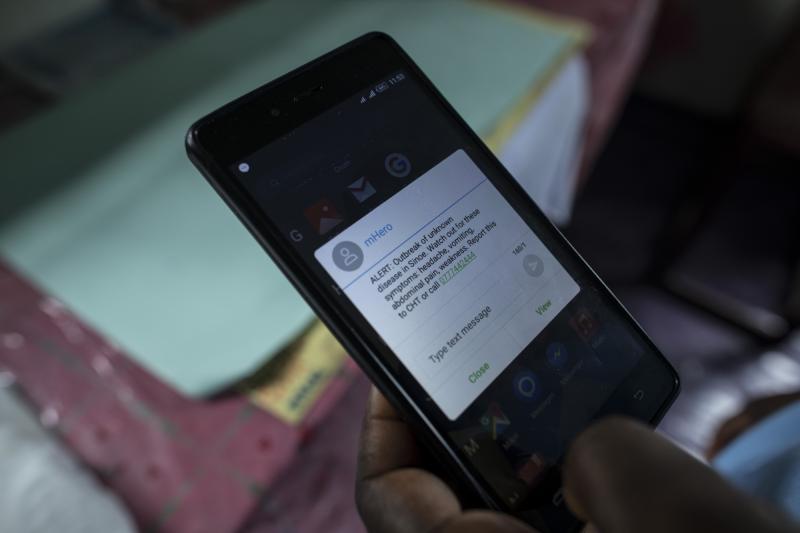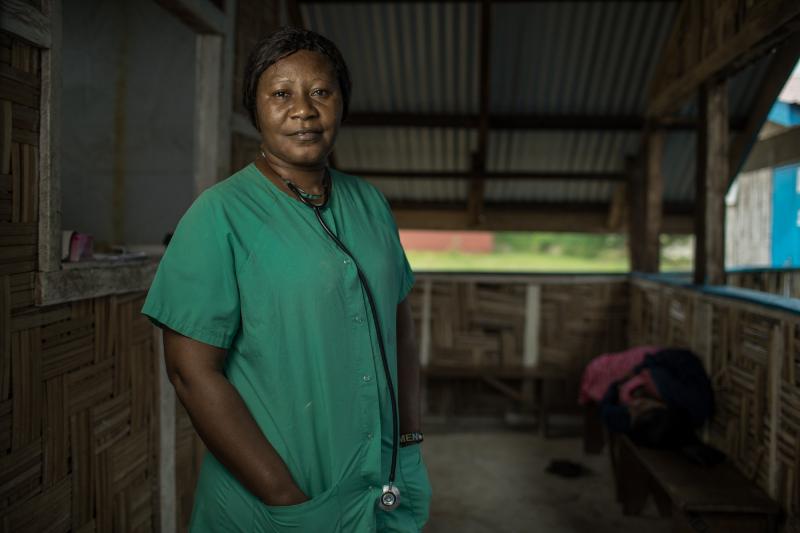Where We Work
See our interactive map


Photo by Sarah Grile for USAID.
Lessons from the Ebola outbreak response.
How can digital technologies and data best be leveraged to support the COVID-19 response in low- and middle-income countries?
Recent efforts to fight the pandemic demonstrate the incredible power that digital technology offers as we rise to face unprecedented global threats and support partner countries’ on their journey to self-reliance.
To fight the spread of COVID-19, information is critical. Responders and decision makers need detailed and timely data about the disease’s spread, and communities need access to trusted and truthful information to protect themselves and their families.
Children are using digital technology to learn, people are using digital payments to send money to loved ones, and local institutions are coming online to deliver services that have been impacted by the epidemic. This requires robust digital tools, internet connectivity, as well as policies and infrastructure to support the responsible use of these technologies and sensitive data.
The response to the Ebola outbreak that hit West Africa in 2014 offers powerful lessons for how to effectively and responsibly use digital technologies and data.
When that outbreak happened, the world was unprepared. The consequences: 30,000 cases, 11,000 deaths, and billions of dollars lost. The scale of COVID-19 is already much broader.
During the Ebola outbreak, the systems West Africa required to gather, analyze, and use data and information were not robust enough to support a timely response. USAID and partners worked together to overcome some of these challenges. The resulting investments show the power of digital technology. In fact, these are programs that have been in use since the end of the Ebola outbreak and are now being used to respond to COVID-19.

Photo by Morgana Wingard for USAID.
Problem: Uncoordinated investments led to more than 50 digital data systems being brought in or created to support affected countries’ response. Health workers on the front lines did not have consistent access to information.
Solution: USAID and partners developed mHero, an information-sharing tool that helps speed up communication with frontline health workers. The tool reuses a government’s existing systems rather than developing new ones. The Government of Liberia used it to communicate directly with frontline health workers during the Ebola outbreak. Since then, mHero is used on a regular basis by a variety of departments within the Ministry of Health to inform health governance and service delivery.
Today: Thanks to mHero’s flexible design, the Government of Liberia has repurposed it to share weekly updates on COVID-19 and support early case detection. This helps the Ministry of Health know about outbreaks faster, communicate the results of lab samples faster, and respond in a rapid fashion, making Liberia and neighboring countries safer.

Photo by Morgana Wingard for USAID.
Problem: Before and during the Ebola outbreak, West African technical expertise to maintain and adapt digital health platforms was located within the private sector. The public sector—made up of the people responding to the Ebola outbreak—relied on international experts flying in to adapt and maintain information systems.
Solution: USAID and the West African Health Organization (WAHO) developed and launched the West African Health Informatics Team (WAHIT), a group of software engineers and informatics experts from the region to sustain health information systems at a regional level.
Today: Because of WAHIT, WAHO has the capacity to support countries and regional efforts in a data-driven COVID-19 response. WAHIT has developed a COVID-19 case tracker that compiles and shares information directly from ministry of health data management teams and via social media. It supports WAHO in understanding and responding to trends across the West Africa region.
These life-saving programs are possible not just in West Africa but in all countries, and as part of USAID’s new Digital Strategy and forthcoming Digital Health Vision.
Leveraging the lessons from recent epidemic response efforts will help ensure we fully harness the power of digital systems and data systems for COVID-19 response and recovery. Our list of lessons learned is a good place to start.
With funding from USAID, IntraHealth International and UNICEF created mHero in August 2014 to support health-sector communication during the Ebola outbreak in Liberia. Learn more.
This post originally appeared on Medium.
Get the latest updates from the blog and eNews




